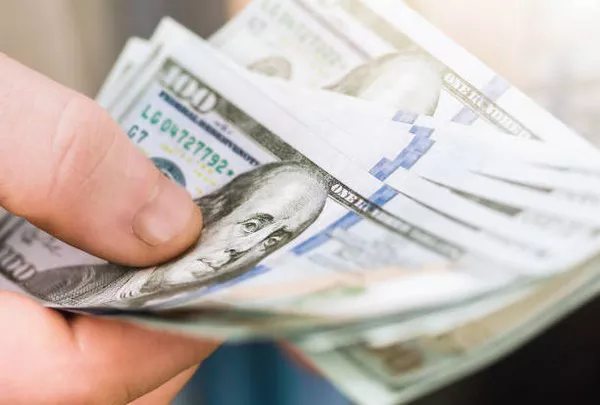In the realm of international finance, the value of currencies is subject to a multitude of factors, ranging from economic indicators to geopolitical events. Pakistan, like many other nations, closely monitors the value of the US dollar due to its significant impact on the country’s economy. Understanding the potential trajectory of the dollar in Pakistan requires a comprehensive analysis of various economic indicators, global trends, and domestic policies. In this article, we delve into the factors influencing the expectations surrounding the rise of the dollar in Pakistan.
Economic Indicators and Trade Dynamics
One of the primary determinants of currency value is a country’s economic performance. In Pakistan’s case, factors such as GDP growth, inflation rate, and trade dynamics play crucial roles in shaping the value of the dollar. Historically, Pakistan has experienced fluctuations in its currency value, often influenced by its trade balance and external debt.
The trade deficit, which occurs when a country’s imports exceed its exports, can put downward pressure on the local currency. Pakistan has been grappling with a persistent trade deficit, primarily due to its reliance on imports for essential commodities and machinery. The resulting strain on foreign exchange reserves can contribute to a weakened local currency against the US dollar.
Moreover, inflationary pressures can erode the purchasing power of the domestic currency, leading investors to seek refuge in more stable assets denominated in dollars. Pakistan has witnessed periods of high inflation, which can undermine confidence in the local currency and drive demand for the dollar.
Global Economic Trends and External Factors
Beyond domestic indicators, global economic trends significantly influence the value of the dollar in Pakistan. As the world’s reserve currency, the US dollar is subject to various external factors such as interest rates, geopolitical tensions, and global trade dynamics.
Changes in US monetary policy, particularly interest rate adjustments by the Federal Reserve, can have far-reaching implications for currencies worldwide. Higher interest rates in the US may attract foreign investors seeking better returns, leading to an appreciation of the dollar against other currencies, including the Pakistani rupee.
Geopolitical tensions and economic uncertainties on the global stage can also impact currency values. Events such as trade disputes, geopolitical conflicts, or fluctuations in oil prices can create volatility in currency markets, influencing the demand for safe-haven assets like the US dollar.
Furthermore, Pakistan’s external debt and reliance on foreign aid and remittances play a pivotal role in determining the value of the dollar. Any adverse developments in these areas can exacerbate concerns about the country’s ability to service its debt obligations, potentially leading to currency depreciation.
Government Policies and Structural Reforms
The effectiveness of government policies and structural reforms can significantly influence investor confidence and, consequently, the value of the dollar in Pakistan. Sound fiscal and monetary policies aimed at promoting economic stability, reducing inflation, and enhancing competitiveness are essential for maintaining a stable currency.
Additionally, initiatives to improve the business environment, attract foreign investment, and diversify the economy can bolster confidence in the local currency and reduce reliance on external financing. Pakistan’s efforts to address structural imbalances, such as energy shortages and bureaucratic hurdles, are crucial for fostering sustainable economic growth and stability.
Furthermore, prudent management of foreign exchange reserves and proactive measures to mitigate currency volatility can enhance the resilience of the Pakistani rupee against external shocks. Central bank interventions, such as foreign exchange market interventions and forward guidance, can help stabilize the currency market and alleviate speculative pressures on the dollar.
Impact of COVID-19 Pandemic
The COVID-19 pandemic has had profound implications for economies worldwide, including Pakistan. The pandemic-induced economic slowdown, coupled with disruptions to global trade and supply chains, has heightened uncertainty and volatility in currency markets.
In response to the economic fallout from the pandemic, central banks, including the State Bank of Pakistan, have implemented monetary easing measures to support growth and liquidity. However, the fiscal strains caused by the pandemic, coupled with rising debt levels, pose challenges for currency stability and could potentially impact the value of the dollar in Pakistan.
Moreover, the pandemic’s impact on remittances, a significant source of foreign exchange inflows for Pakistan, underscores the importance of diversifying revenue streams and promoting resilience in the face of external shocks. Any adverse developments in remittance flows could exert pressure on the country’s external position and currency stability.
Conclusion
The trajectory of the US dollar in Pakistan is influenced by a complex interplay of domestic and global factors, ranging from economic indicators to geopolitical events and government policies. While the dollar’s rise in Pakistan is subject to various uncertainties and risks, proactive measures to address structural imbalances, promote economic stability, and enhance resilience to external shocks are crucial for maintaining currency stability.
As Pakistan navigates the challenges posed by the evolving global economic landscape and the aftermath of the COVID-19 pandemic, prudent fiscal and monetary policies, coupled with structural reforms, will be essential for fostering sustainable growth and stability. By addressing underlying vulnerabilities and fostering investor confidence, Pakistan can mitigate risks and potentially mitigate the impact of external factors on the value of the dollar.


